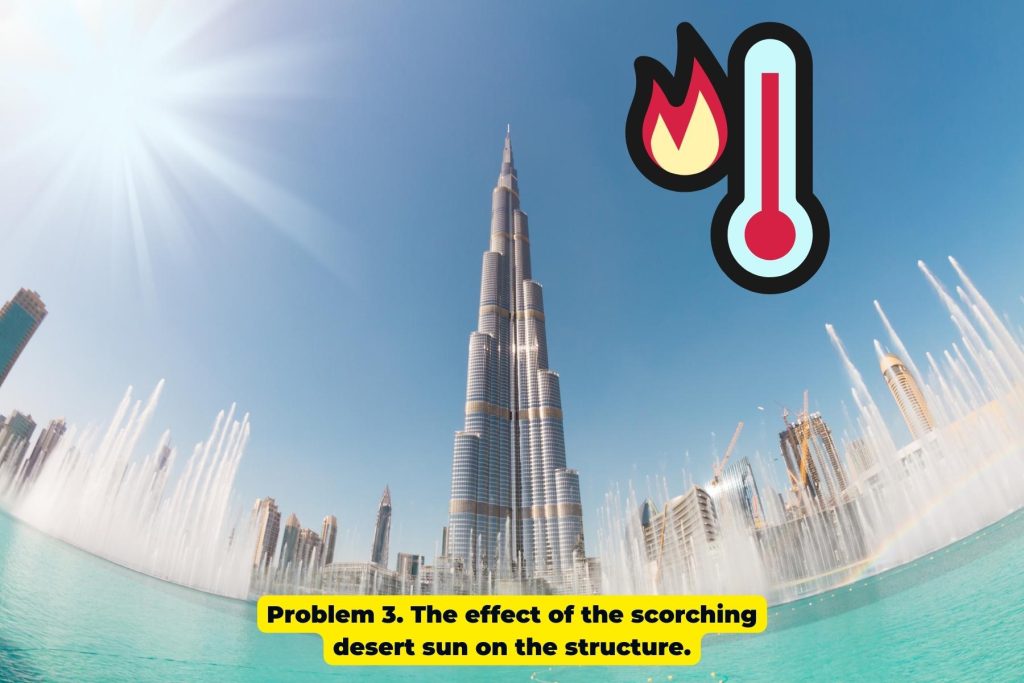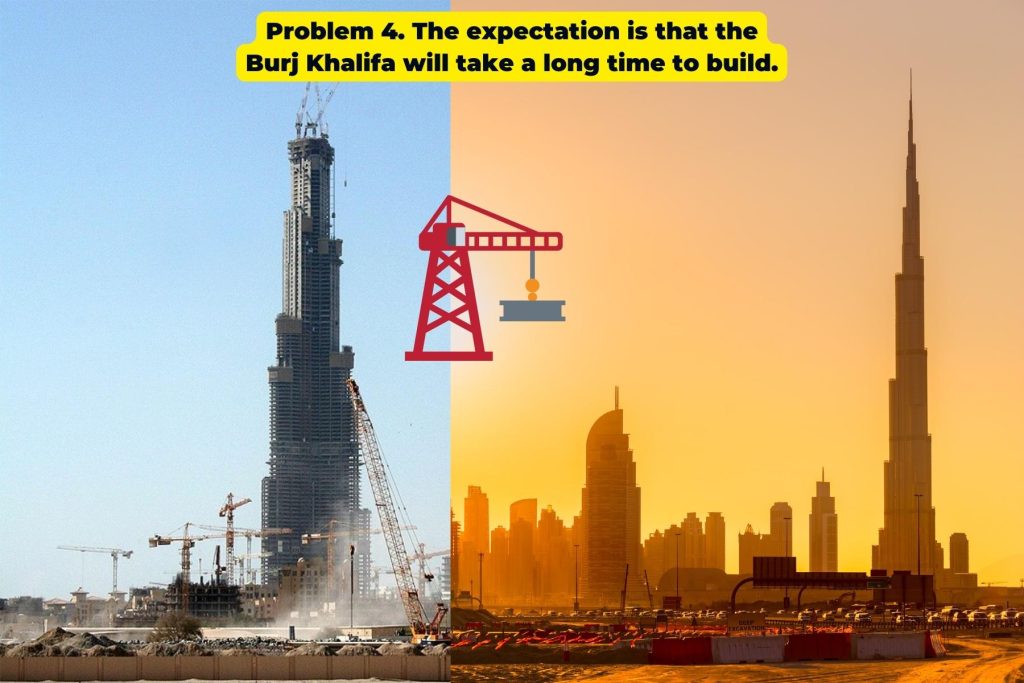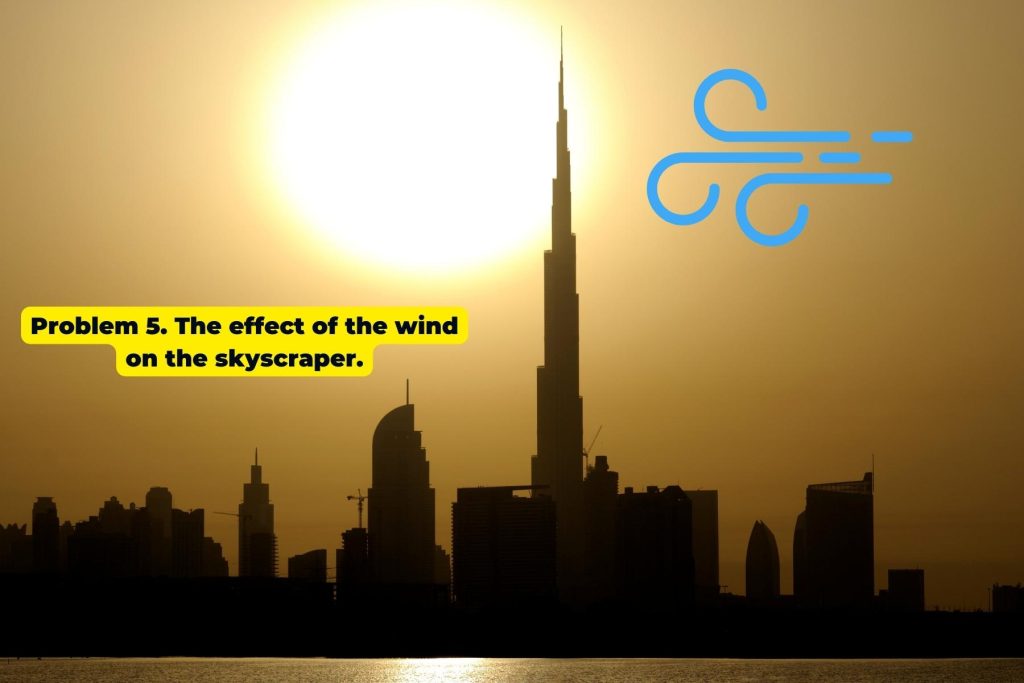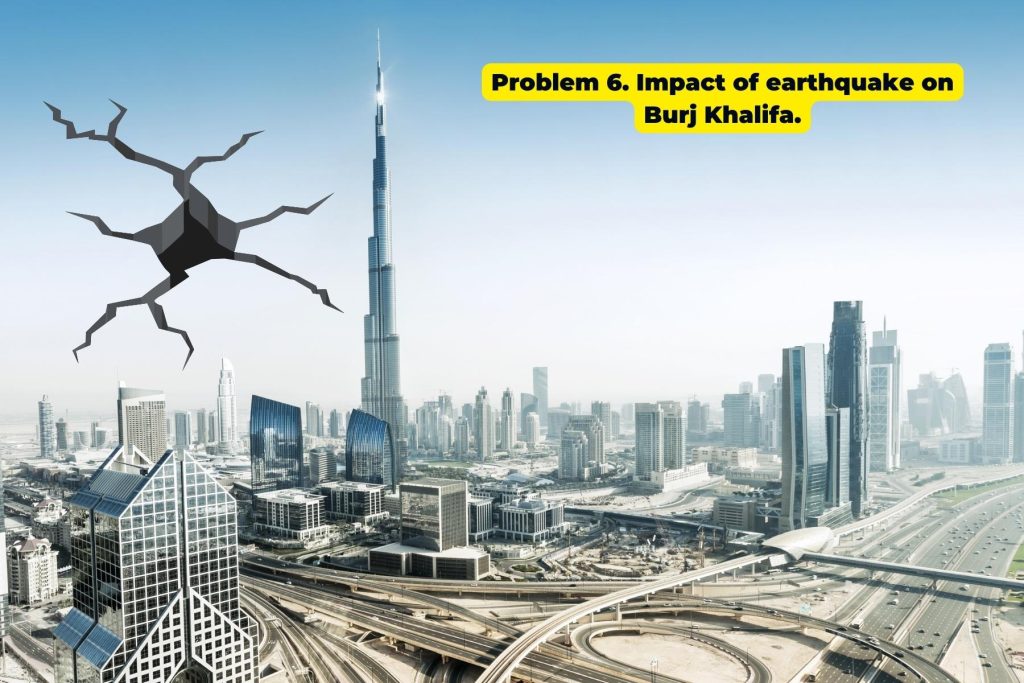In addition to being an architectural wonder, Burj Khalifa, which contains 7 harmful conditions that force engineers to innovate solutions, draws attention by being the newest and most magnificent building in engineering.
Humanity’s interest in skyscrapers developed after the invention of the elevator. People are more interested in structures where they can climb higher and be closer to the sky. The construction of the skyscraper, which started on September 21, 2004, was completed on January 4, 2010.
Burj Khalifa is the tallest structure in the world with a total height of 829.8 meters (2,722 ft, or just over half a mile). In terms of its architectural features, it has a height of 829.8 meters and 160 floors. After the 150th floor of the building, the remaining floors are made of steel. This made it the first building in the world to continue with steel construction on a reinforced concrete mass. In addition, none of the facades of the building are designed flat to minimize the wind loads on the facades of the building. The corners are not sharp, they are made with circular joints.
It is not easy to build the tallest structure in the world. Now you will learn about 7 engineering topics you need to know for the construction of this structure.
Problem 1. To provide transportation in a structure that is 829.8 meters high and can accommodate 35000 people.

Burj Khalifa has 53 different elevators. Some can reach speeds of up to 35km/h and climb the 120th floor in less than 50 seconds. The largest elevators can carry 46 people. It is difficult to ensure that an object traveling this fast can stop immediately in an emergency. It has a braking system that can stop the elevator after a few meters when the speed limit is exceeded.
Problem 2. The concrete material is not suitable for a skyscraper.

The skeleton of the Burj Khalifa is built by combining steel and stone most appropriately. More than 30 thousand tons of steel are used in the building. Steel is embedded in artificial stone (concrete) and used quite cleverly. The reinforced concrete spine is covered with a high-tech curtain wall made of glass and steel. The joints of the building are very flexible. The cladding exterior prototype was subjected to an artificial desert storm test before it was installed in the building. This is the most important stage of the facade before it is implemented in the building. These tests tried to take precautions against anything that nature would throw at the building. They are testing windbreakers’ resistance to wind. Burj Khalifa turns out to be successful.
Problem 3. The effect of the scorching desert sun on the structure.

The scorching desert sun can turn this beautiful building into an oven. The ventilation system was designed for the skyscraper, and the glass system was specially designed. An American engineer has developed an invention that wets and cools hot and humid air and dries it. Ventilation played an important role in the invention of skyscrapers such as the Burj Khalifa. The temperature in Dubai reaches 40 degrees even in the shadows. The factor that protects the Burj Khalifa from the brutal desert sun is hidden in its glass coating. The outer surface and inner surface of the glasses used in the coating are different from each other. The outer surface of the glass reflects the heat from outside. The outer surface of the window is covered with a thin metal layer, reflecting the violet and ultraviolet rays coming into the building in a different directions. The inside of the window is covered with a thin layer of silver to block the infrared rays emitted by the hot desert sand.
Problem 4. The expectation is that the Burj Khalifa will take a long time to build.

Tall skyscrapers take too much time to build. If this is a waste of time; certain parts of the skyscrapers were prefabricated and then mounted in a place like a giant jigsaw puzzle. Parts were manufactured outside and brought to the building just in time to be used. The only problem was the rapid removal of these tons of parts. This problem was solved with a crane in Australia called a kangaroo crane. Kangaroo winches are fast and reliable. In addition, the most striking technology in this structure, special molds called jump forming, were used and thus more speed was gained. Prefabrication systems allow giant skyscrapers to be built faster and more profitably.
Problem 5. The effect of the wind on the skyscraper.

The wind force is acting on the skyscraper, whose length is 829.8 meters, increases as the structure rises. The steel skeleton to be built outside the building for the wind effect reduces the effect of such impacts on the building. But for the height of the Burj Khalifa, the exoskeleton is an inadequate solution to the wind. Therefore, a shape that deceives the current was created in the design. They overturned the effect of the air vortices and prevented them from being organized. While the Burj Khalifa was being built, it was constantly subjected to wind tunnel tests at every stage.
Problem 6. Impact of the earthquake on Burj Khalifa.

We should look for flexibility in the building so that the building can absorb the physical destructions. When you make the building flexible, you can also strengthen it. This structure had to take special precautions for standing on the desert sand. During the foundation, it was filled with a polymer denser than water and lighter than concrete, so that the wells would not fill with water and collapse from behind the drilling machines. This is how foundation piles were built. The engineering mind as well as the science of chemistry contributed greatly to this material, which has a gel-like structure that is lighter than concrete and as flexible as steel.
Problem 7. The likelihood of a terrorist attack.

After the September 11 attacks, the era of skyscrapers seemed to be over. The height of the building made evacuation difficult. When buildings rise, they must also be protected against terrorist incidents. The concrete spine of the Burj Khalifa is made fire-resistant. In case of an emergency, there are 9 shelter rooms in the building. There are shelters on one of every 30 floors of the building. There is a ventilator system that neutralizes the smoke in case of fire. In case of any problem, people will not leave the building, on the contrary, they will stay in the building. The walls of these shelters are resistant to fire for 2 hours and there is a system that pumps clean air to the shelter through fire-resistant pipes. In addition, non-perforated doors prevent smoke from penetrating inside. Technology is used that facilitates the access roads to these shelters and in particular neutralizes the smoke.
Conclusion
The Burj Khalifa is the tallest structure man has ever built on the planet. Rising on the shoulders of historical engineering geniuses and an architectural marvel, Burj Khalifa represents the ultimate in skyscrapers.
Bir yanıt yazın